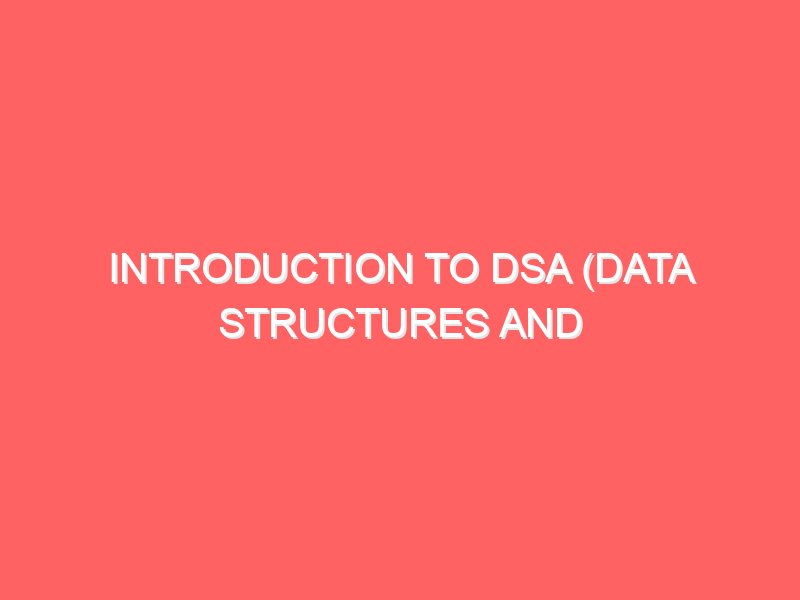Introduction to DSA (Data Structures and Algorithms)
What is DSA? When we talk about DSA, we’re referring to Data Structures and Algorithms. Let’s break that down: In simple terms, think of DSA as the combination of tools (data structures) and methods (algorithms) that help you solve complex problems in an optimized way. It’s like having a toolkit where each tool (data structure) is suited for a specific job, and the method (algorithm) is how you use that tool. DSA is at the heart of programming and problem-solving, which makes it essential for anyone diving into computer science, coding, or software engineering. Why Learn DSA? Learning DSA equips you with the knowledge to: Algorithmic Notation Before jumping into algorithms, let’s talk about notation. When discussing algorithms, we use notations to describe how fast or slow they are. This helps us understand if an algorithm is efficient enough for a particular problem. Notations to Measure Complexity 1. Big O Notation (O) The most commonly used notation to describe how the runtime of an algorithm increases as the input size increases. Big O focuses on the worst-case scenario. For example: Why it matters: Knowing the worst-case performance helps you plan for the worst possible situation your code might face. 2. Small o Notation (o) This notation is used to describe algorithms that are better than what Big O suggests but don’t quite reach the next best level. It’s a more precise way of saying how close the algorithm’s runtime is to the ideal scenario. For example, if you have a sorting algorithm that’s slightly faster than O(n log n), we might say it’s o(n log n). Capital and Small Notations: What’s the Difference? When we talk about notations like O, Ω, θ, and o, the size of the letter tells us something important: Example: Linear Search vs. Binary Search Let’s take an example of searching for a number in a list: Wrapping It Up Understanding algorithmic notation helps you gauge how well your code will perform as your input grows larger. It’s a critical skill, especially when working on big projects where efficiency can make or break the application. In the next section, we’ll dive into more practical algorithms and how different data structures help us solve various problems. So, stay tuned, and we’ll explore sorting, searching, and more exciting concepts in the world of DSA!
Introduction to DSA (Data Structures and Algorithms) Read More »

